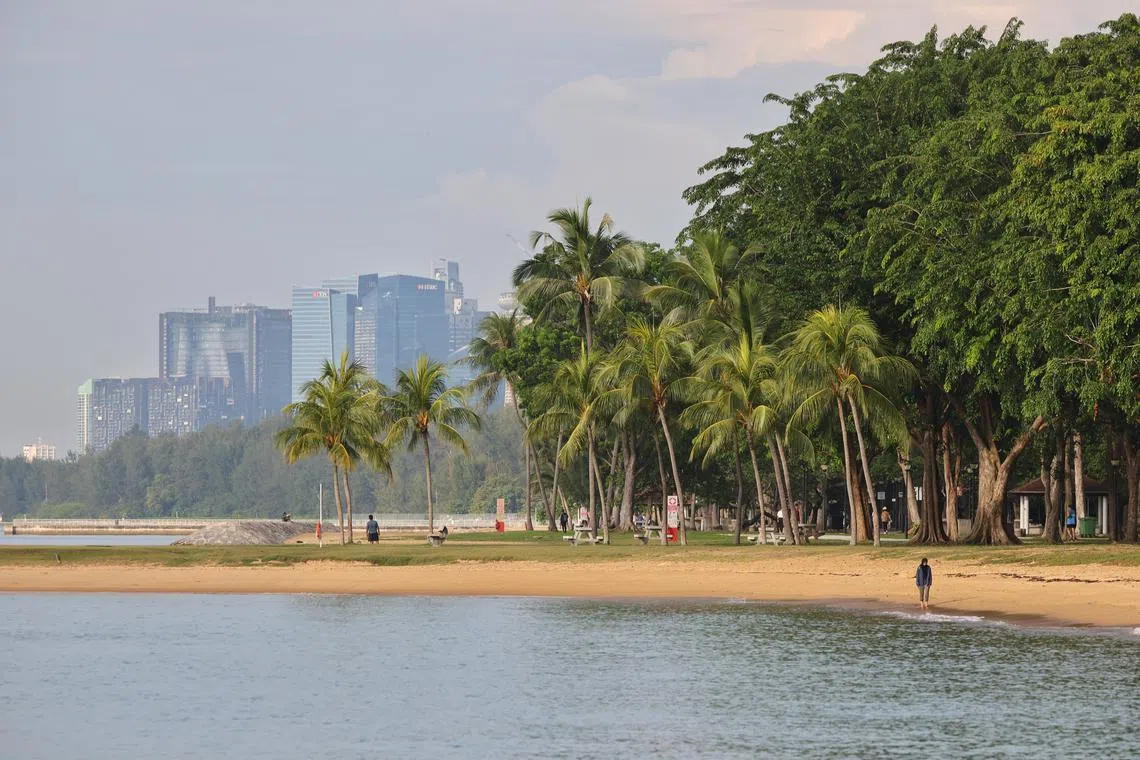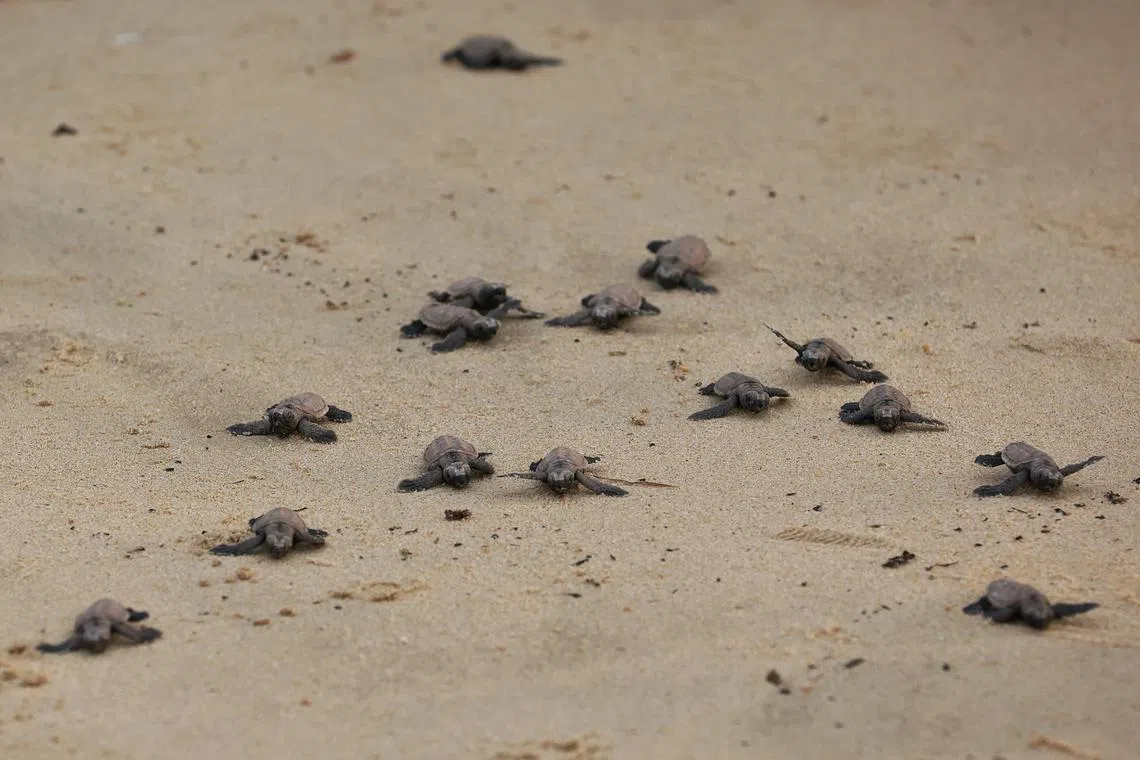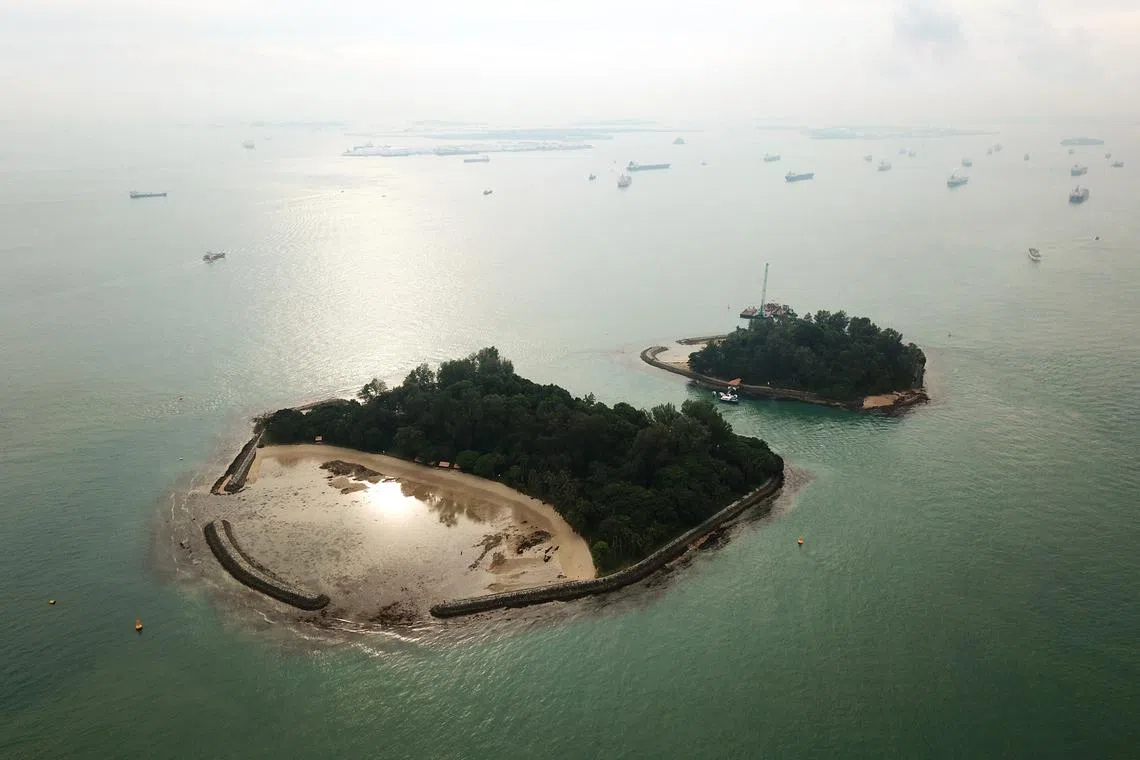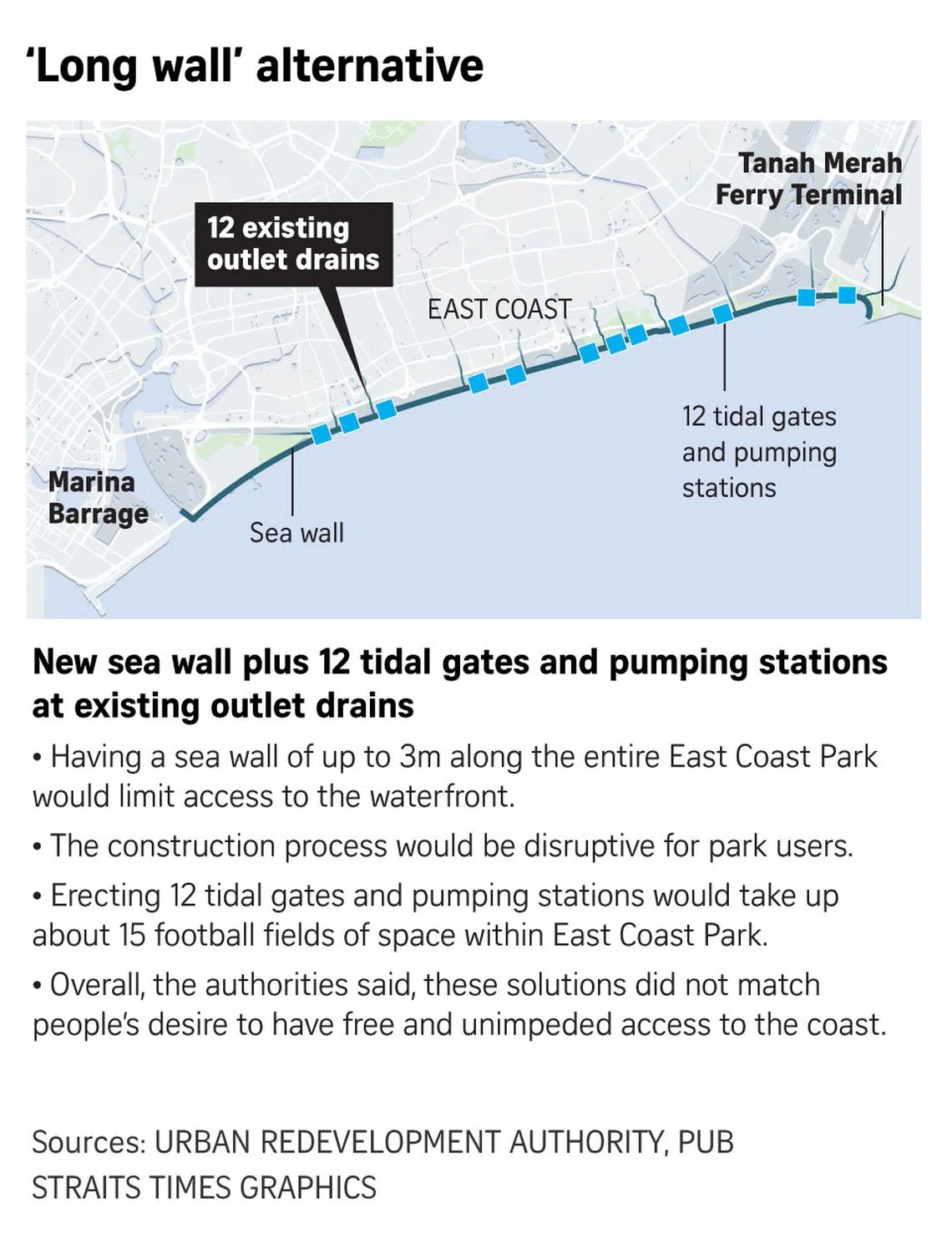Ensure Long Island project doesn’t harm marine life at East Coast, Southern Islands: Experts
Sign up now: Get ST's newsletters delivered to your inbox

Experts say measures to protect sensitive marine habitats need to happen from day one.
ST PHOTO: JASON QUAH
Follow topic:
SINGAPORE - Measures to protect sensitive marine habitats in East Coast need to happen from day one, say experts, to minimise the impact of the future Long Island project
The Long Island construction not only risks disturbing turtles, corals and seagrass at East Coast Park, but may also affect the rich marine life of the Southern Islands, which are less than 10km away from the mainland, they noted.
From early 2024, government agencies will embark on extensive environmental and engineering studies for the future Long Island development off East Coast Park. Plans for the development include three masses of reclaimed land covering around 800ha, with a reservoir in between.
This massive project will take several decades to plan, design and build, and will be the East Coast area’s defence against sea level rise and inland flooding, while meeting future land use needs and water supply.
The westernmost tract of land will extend from Marina East, while the easternmost tract will extend from Tanah Merah.
“I feel the Long Island development is relevant to Singapore’s needs, as the planning investigates multifunctional optimisation of the land and seascape changes, including protection against sea-level rise,” said Emeritus Professor Chou Loke Ming from the National University of Singapore’s Department of Biological Sciences.
Prof Chou – alongside other marine biodiversity experts including Mr Lester Tan, chairman of the Marine Conservation Group at Nature Society (Singapore) – stressed that the seaward part of the Long Island should incorporate eco-engineering and nature-based solutions, so that the future land masses can be conducive for marine creatures’ relocation or return after the reclamation.
“Nature-based solutions will be best to compensate for the loss of marine life from the Long Island footprint. If tidal conditions require armoured protection such as sea walls, then design it to incorporate large tidal pools, bays or lagoons that can enhance marine biodiversity.”
The experts also suggested planting mangroves and building artificial coral reefs, which can serve as living breakwaters and armour against storm surges and rising sea levels.
The last major reclamation in the south-east between the 1960s and 1980s – which gave rise to Marine Parade and East Coast Park – wiped out much of the teeming intertidal habitats and marine life there. But in recent decades, nature has made a comeback along the artificial shoreline.
Corals have recolonised man-made sea walls along the coast and at Tanah Merah Ferry Terminal, which also has some seagrass patches nearby.
The shore between the National Service Resort and Country Club near Tanah Merah and the National Sailing Centre is known to be a nesting hot spot for critically endangered hawksbill turtles and the coastal horseshoe crab, said Mr Tan.

Hawksbill turtle hatchlings making their way towards the sea at East Coast Park on July 17, 2023.
ST PHOTO: KEVIN LIM
A rock wall habitat at Marina East Drive comprising a sandy beach and an intertidal area is a refuge for nesting Malaysian plovers – a locally critically endangered bird – and migratory shorebirds, he added.
“All these will be, unfortunately, habitats that we may lose with the Long Island construction,” he said.
Reclamation has already claimed about 60 per cent of Singapore’s original coral reefs. With habitat change from seawater to freshwater when the reservoir is built, water movement will also change.

Even if biodiversity-rich sites are avoided during reclamation, seagrass and corals – home to a host of marine creatures – are very sensitive to sedimentation, noted Mr Muhammad Nasry, executive director of environment group Singapore Youth Voices for Biodiversity.
“Sand dumping makes the water cloudy, which limits light penetration and can significantly impact the survival of organisms that depend on photosynthesis,” he added.
As part of the five-year environmental and engineering studies, innovative and cost-effective nature-based solutions will be explored for the Long Island.

An artist’s impression of the view towards Long Island from East Coast Park.
PHOTO: URA
Another biodiversity hot spot that could be affected is the Southern Islands – home to the largest diversity of marine life in Singapore and its remaining healthy reefs.
Dr Jani Tanzil, facility director at St John’s Island National Marine Laboratory, said sediment plumes and other pollutants spilling over from works could impact the Southern Islands, including the Republic’s only marine park – Sisters’ Islands Marine Park.

Sisters’ Islands Marine Park is the Republic’s only marine park.
PHOTO: ST FILE
Apart from standard environmental mitigation measures such as using sediment curtains to control pollution and accounting for the changes to water movement due to construction, Dr Jani hopes that construction timelines can work around periods that are more sensitive for marine life, such as during a marine heatwave or a coral spawning season.
Coral larvae formed in the southern waters float around the entire southern coast, so any changes in hydrology may affect where the larvae can settle and colonise, said Mr Ho Xiang Tian, co-founder of environmental group LepakInSG.
The authorities have also been eyeing the southern waters to set up fish farms in the future, which, if not managed well, can also add pressure to the marine environment.
Noting this, Dr Jani pointed out that there must be a whole-of-government approach in managing not just land use but the seascape as well.



